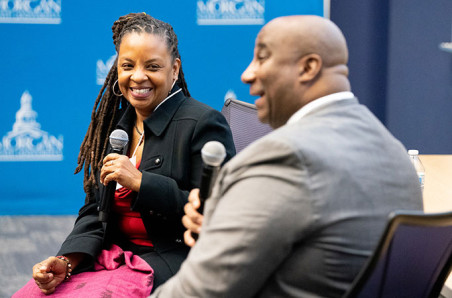
On September 20, Director Vidal spoke with Kim Tignor, executive director of Take Creative Control, about the importance of creators participating in the IP economy. (Photo courtesy of Take Creative Control)
Tips on taking control of your creative IP
When I first began my tenure as Director in the spring of last year, I pledged to strongly advocate for the value of intellectual property (IP) and its protection. As we work throughout the world to strengthen the IP ecosystem through new laws, policies, practices and collaborations, I consider it an honor to also be an ambassador for IP, impressing upon those with great ideas – including our youth, women across the globe, and our military – the importance of protecting IP.
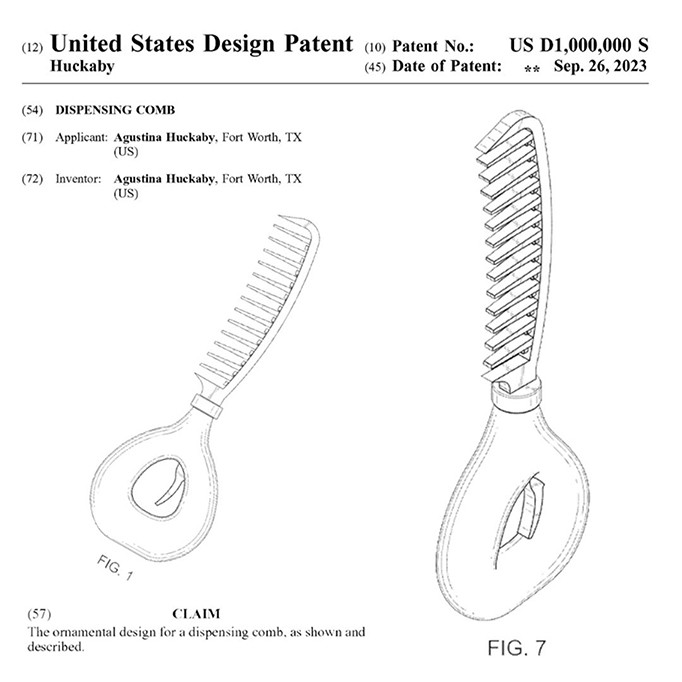
The 1 millionth design patent for a comb created by Agustina Huckaby, an inventor and licensed cosmetologist from Fort Worth, Texas.
Patented inventions are in every common device and product you use every day, such as your smartphone, car, or even your hair dryer, brush, and comb. Indeed, the USPTO just granted the 1 millionth design patent for a comb created by Agustina Huckaby, an inventor and licensed cosmetologist from Fort Worth, Texas.
In fact, many products are covered by multiple patents, including for follow-on innovations that improved the product. One example I like to use is Thomas Edison, whose original light bulb that he submitted to the USPTO in the 1800s is sitting on my desk at our headquarters in Alexandria, Virginia. When I go into classrooms and ask whether Thomas Edison invented the light bulb, the kids know! They say, “No – he just invented a better filament.”
In addition to being able to protect your idea or design with a patent, you can also protect your product, service, or company with a trademark. Some widely recognized trademarks are the Nike swoosh; images of the brand names of products including Barbie dolls; Clorox bleach; the unique stitching on the back pocket of Levi's jeans; and the name and some popular lyrics of musician Taylor Swift. Catchy slogans you come up with for your product or service, such as “If you spray it when you say it no problem” that two 10-year-old girls on a military base in Rota, Spain, came up for their spit-proof headset, can also be trademarked.
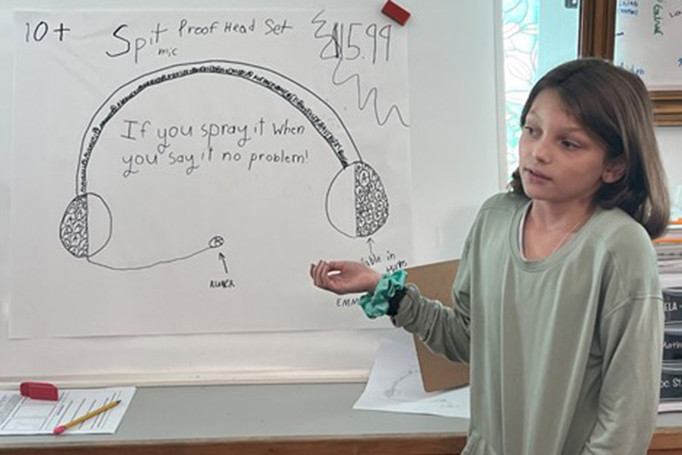
5th graders on the military base in Rota, Spain presenting their “spit-proof headset” to Director Vidal during her visit to the base.
Trademarks can even be scents. Scent marks protect a unique smell from being copied by other similar products.
Play-Doh, for instance, has its scent protected. We recently posted this popular Instagram video asking members of the public if they could identify the unique smell of this scent mark – check out who immediately guessed it.
What about that poem you wrote? Or the picture you took at the school play (or one that turned out so well you may want to sell it online)? Copyrights are there to save the day and to protect you against someone else copying (or to compensate you if they do!).
How about that great BBQ sauce that won first prize the state fair and you want to start bottling it and selling it at farmers markets (and maybe later in national stores or online)? Or that drink recipe you concocted? Or perfume? In come trade secrets. If you take the right steps to ensure nobody has access to your “secret sauce” you may be able to protect your creation just like Coca-Cola did with their famous recipe.
Indeed, intellectual property is all around us. Because anyone can be a creator.
But people sometimes ask me why they should go through the trouble of protecting their IP. Simple:
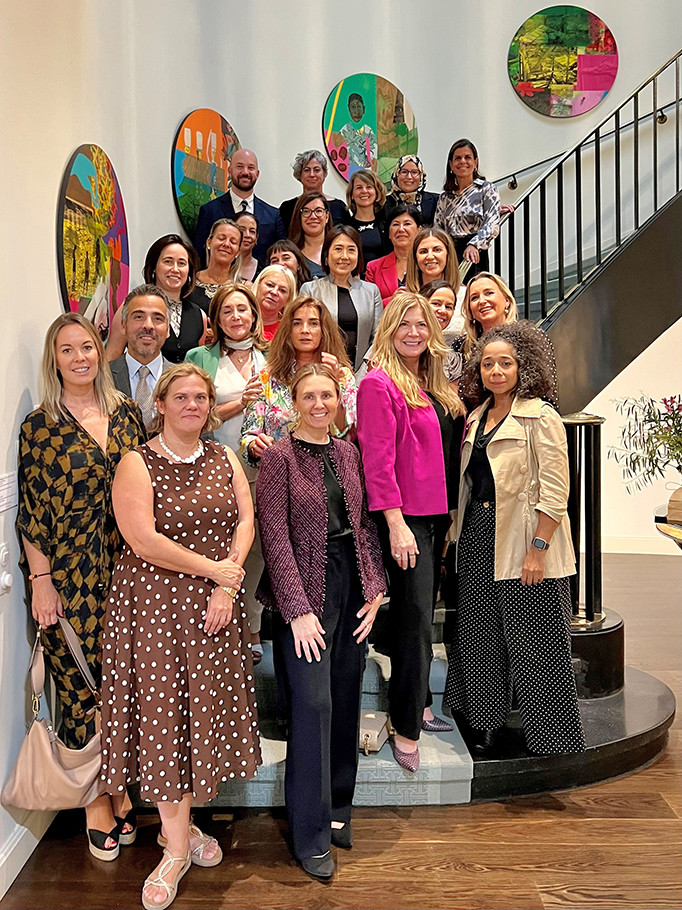
Director Vidal met with women entrepreneurs at Ambassador Julissa Reynoso's residence in Madrid, Spain.
When you get a patent or trademark, create a work eligible for copyright protection, or protect your trade secret, it's a valuable asset. You're investing in yourself and your idea. Our research has found that companies in IP-intensive industries tend to employ more workers, whose average weekly earnings of $1,517 in 2019 were 60% higher than in other industries. Other research shows that protecting one's IP is crucial to the success of their business. For example, according to a joint study by Harvard Business School and NYU's Stern School of Business, when used as collateral, a company's first patent increases venture capital funding by 76% over three years. It can also help serve as an important employee recruiting tool: The approval of a startup's first patent application increases its employee growth by 36% over the next five years. Further, protecting your IP can also increase your market share – a new company with a patent increases its sales by a cumulative 80% more than companies that do not have a patent.
As for trademarks, not only are they important assets, if you end up deciding to launch a business or expand to other areas in the U.S., a federal trademark that you can only get from the USPTO will protect you. You can use your trademark to stop copycat products at the borders or have online resellers remove copycat offerings. You can also use your copyright to have copycat material taken down from the internet.
Confused about what type of intellectual property you might need?
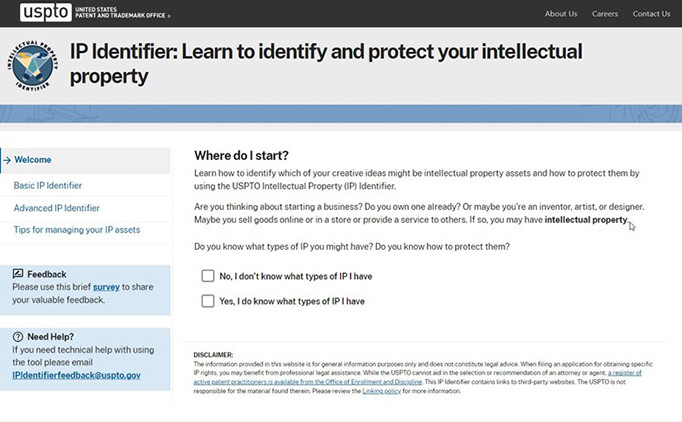
The IP Identifier is an easy-to-use new online tool that lets you figure out what type of IP you have.
The USPTO now has an easy-to-use new online tool that lets you figure out what type of IP you have and whether it's protectable by a patent, copyright, trademark, and/or trade secret. We call it the IP Identifier. It's a very popular tool among those visitors to our website who are new to IP, with more than 100,000 visits to the page since we launched it earlier this year.
Registering your IP protects your IP – and you. Even during the period when one of our thousands of knowledgeable examiners is reviewing your application, just the submission of your application filing may provide some legal protection in the event someone later tries to claim your idea. And, having a “patent pending” can help you get funding!
Many applicants pursue the help and services of legal counsel. The 84 Patent and Trademark Resource Centers nationwide – often found in academic and community libraries near you – have lists of attorneys they can refer you to, in addition to providing free expert advice on filing and USPTO processes. And for under-resourced inventors, you may be eligible for free legal help filing an application through our Patent Pro Bono program or Law School Clinic program. Check out our information on free legal help.
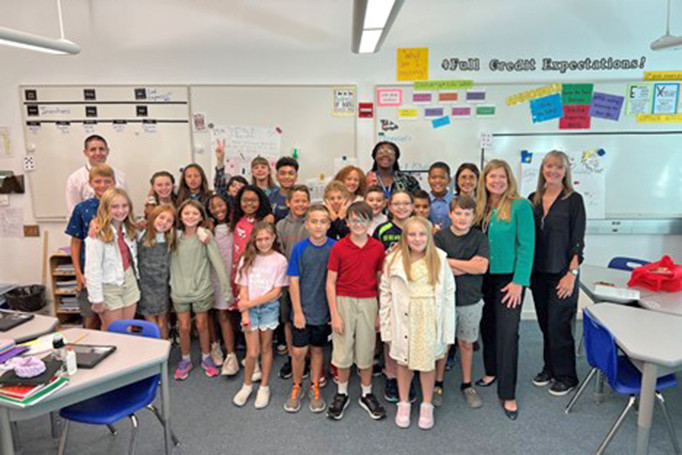
This month, preceding her trilateral meetings with Europe and Japan in Munich, Germany, Director Vidal met with 5th graders on the military base in Rota, Spain.
For more information on USPTO programs, visit our Inclusive innovation webpage. There are programs for kids, teachers, women, college students, military veterans and spouses, and more.
We hope to see you at a no-cost USPTO program soon!
Engage with the Director and join the conversation on our social media channels.




